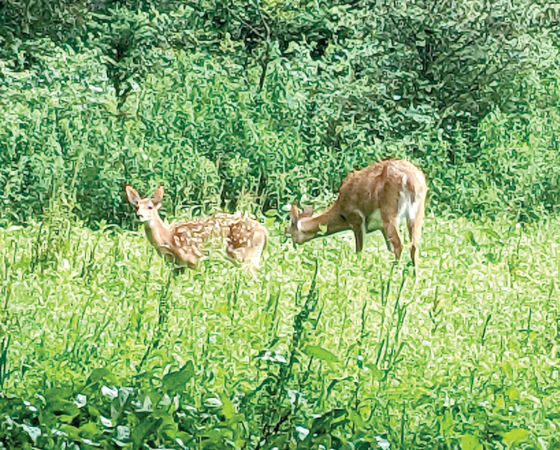Every spring, like a lot of other folks, I find myself scanning the countryside for the newly arriving fawn deer.
Most of our adult does in Pennsylvania start giving birth between mid-May and the end of June, with the birthing season peaking around May 30th.
I actually spotted my first fawn a couple of weeks ago off at the edge of a distant field.
Last week, however, resulted in a more interesting fawn sighting as I traveled down a back road on the way into town. It was mid-morning when I watched a doe walk out onto the middle of the road; she looked back and then continued up the steep bank on the other side of the road.
I slowed down, thinking more deer were coming, and sure enough, a little fawn deer walked out to the middle of the road and laid down right on the road when it spotted my vehicle. I stopped my truck at the edge of the open stretch of highway and stayed 30 yards back. The fawn laid still in the middle of the road for a minute or two, and finally, the doe made her way back down on the road, and the two of them headed up the steep bank and into the woods.
Obviously, the fawn had not picked a great spot to “hide” from my approaching vehicle, but even at that very early age in their life, they knew that they must hunker down and not move in the face of danger. That fawn had no cover but waited patiently for Mom to return before it got up to run off with her.
Seeing this situation made me think about how many times in the past I’ve spotted a young fawn hidden somewhere in the woods, but no adult was anywhere in sight. What biologists have found is that during the first few weeks after birth does only visit a fawn periodically throughout the day to nurse the fawn. These nursing visits may only last for 30 minutes, and mothers may be gone for hours at a time.
Mama deer not staying with her young constantly may seem like some neglect, but the fact is the doe is utilizing this away time to bulk up and increase her milk supply, and she also stays away to avoid attracting attention to the area.
After about six weeks, the fawns reach a level of strength and agility that allows them to spend more time traveling with their mothers.
Something the Game Commission and biologists want to caution people about is that during and after this birthing period, fawns will often be spotted all alone, but that does not mean that they were abandoned. It’s best to keep your distance; the adult doe may well be somewhere nearby. Just like that fawn that laid down in the middle of the road in front of me, by keeping my distance, the mother doe felt secure in coming back and gathering up her youngster.
If you haven’t seen any fawns, keep your eyes open because the young ones are on their way.




